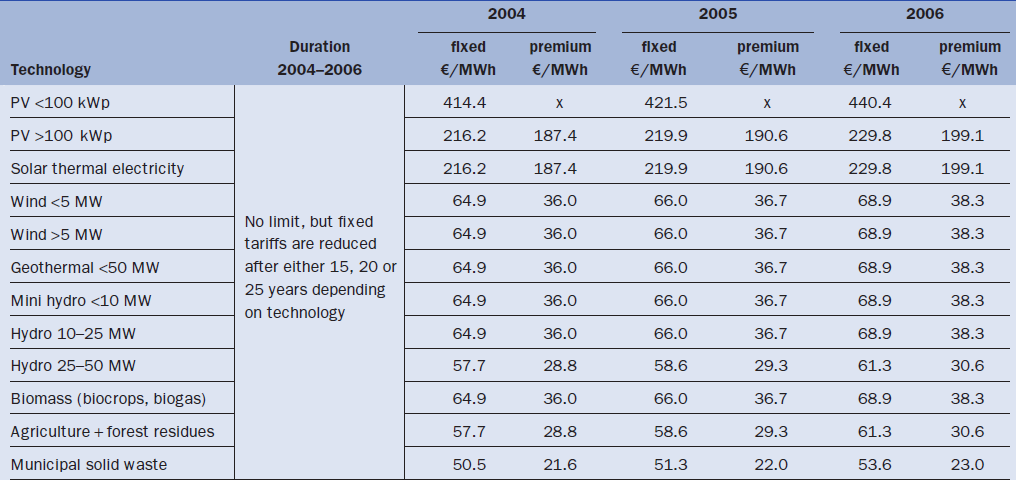MAIN PUBLICATION :
| Home � APPENDIX � Appendix I � Spain |

|
Spain
MARKET STRUCTURE
Spain is currently far from its RES-E target. In 1997, a strong support programme in favour of RES was introduced. In 2004, hydropower still provided 50 per cent of all green electricity, while onshore wind and biomass had started penetrating the market. PV energy is also promising, with an average growth rate of 54 per cent per year. Proposed changes to the FITs and the adoption of a new Technical Buildings Code (2006) show increased support for biomass, biogas, solar electricity and solar thermal.
KEY SUPPORT SCHEMES
RES-E in Spain benefits from the following support mechanisms:
- A FIT or a premium price is paid on top of the market price. The possibility of a cap and floor mechanism for the premium is being considered. In the draft law published on 29 November 2006, reduced support for new wind and hydro plants and increased support for biomass, biogas and solar thermal electricity were proposed.
- Low-interest loans that cover up to 80 per cent of the reference costs are available. Fixed and premium FITs for 2004, 2005 and 2006 are shown in Table I.23.
Table I.22: Fixed and Premium FITs in Spain

FUTURE TARGETS
The Spanish Plano de Energías Renovables 2005–2010 sets the goal of meeting 12 per cent of total energy consumption from RES in 2010. The target to be achieved in 2010, under the RES-E Directive, is 29.4 per cent of gross electricity consumption. The revised Plano of 2005 sets capacity targets for 2010, which include wind (20,155 MW), PV (400 MW), solar thermal (4.9 million m2), solar thermal electric (500 MW) and biomass (1695 MW). In Spain, the RES-E share of gross electricity consumption was 19.6 per cent in 2004, compared to 19.9 per cent in 1997.
| Acknowledgements | Sitemap | Partners | Disclaimer | Contact | ||
|
coordinated by  |
supported by  |
The sole responsibility for the content of this webpage lies with the authors. It does not necessarily reflect the opinion of the European Communities. The European Commission is not responsible for any use that maybe made of the information contained therein. |
